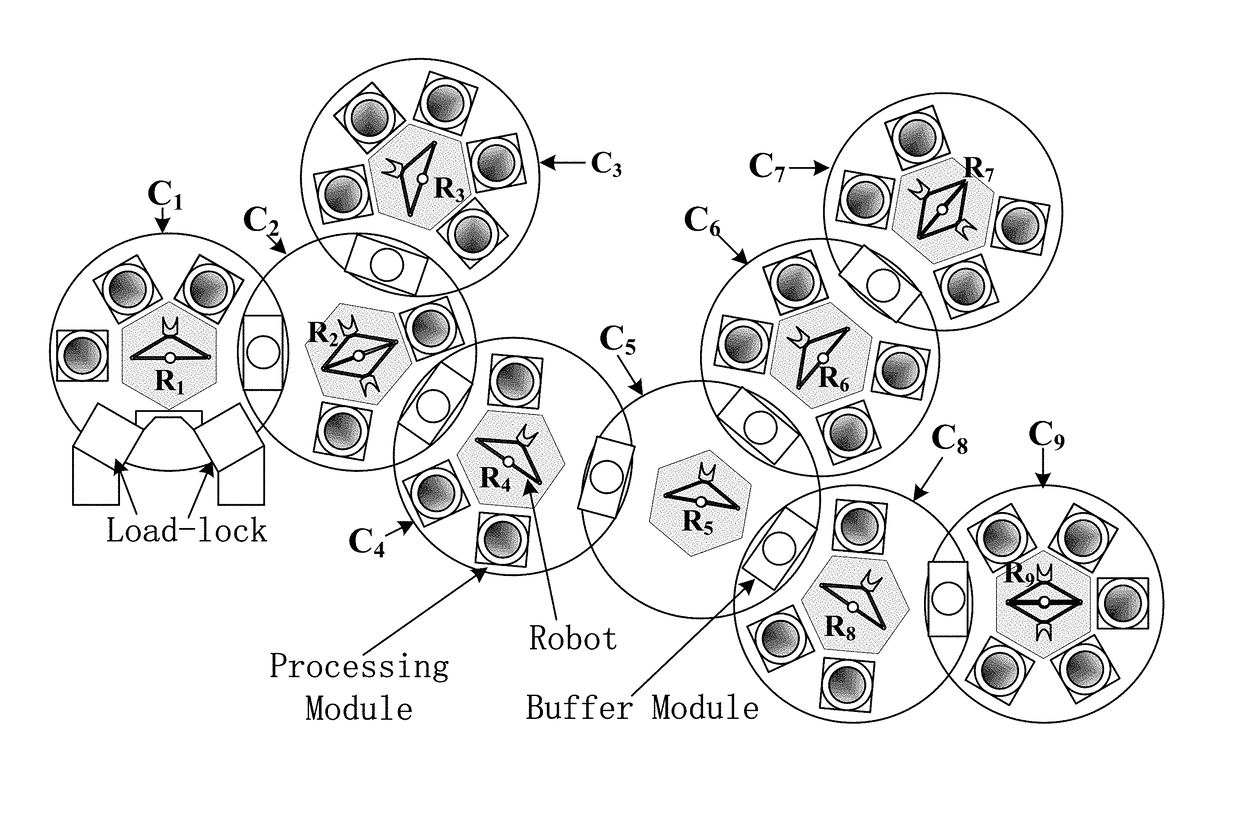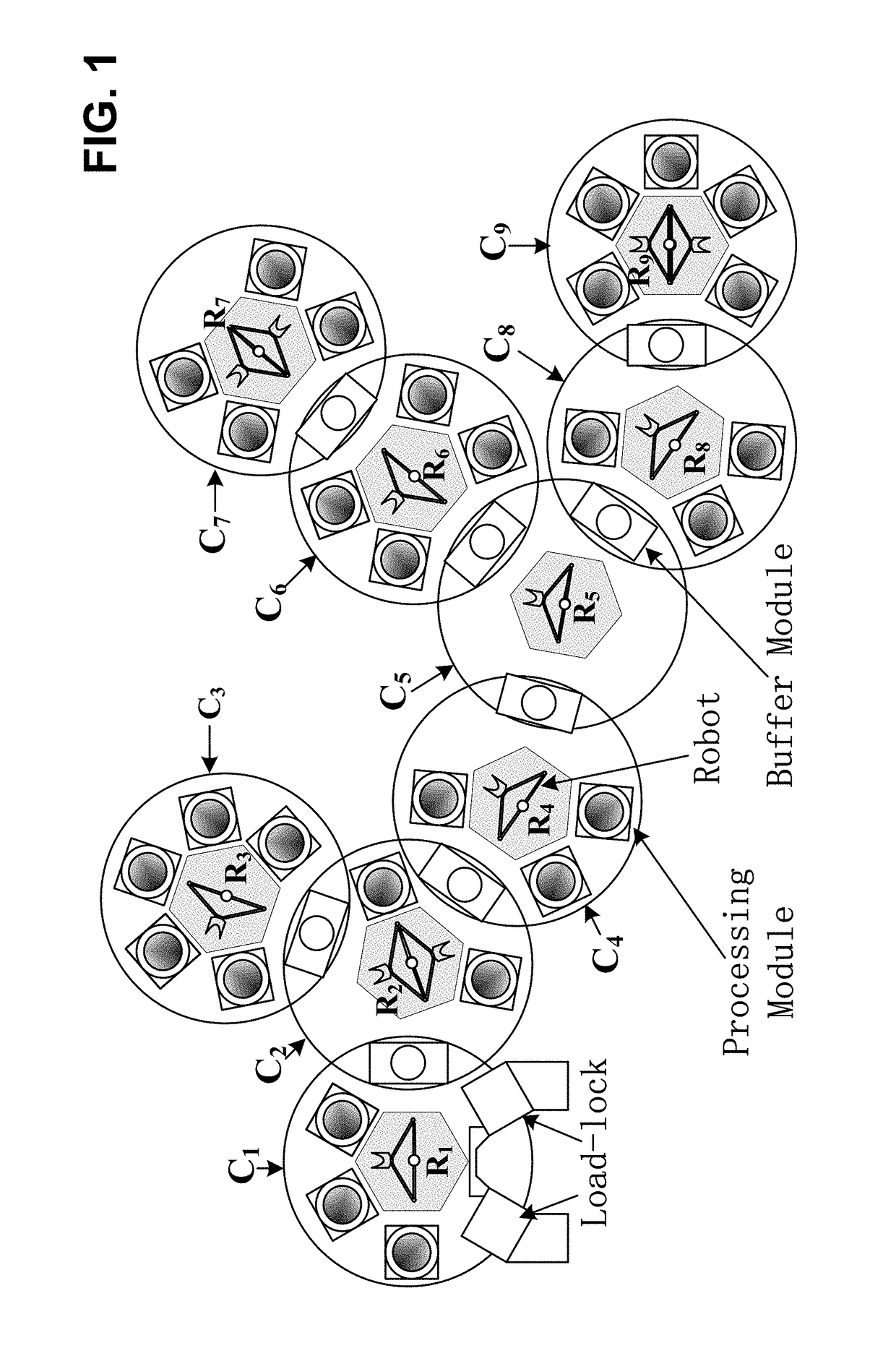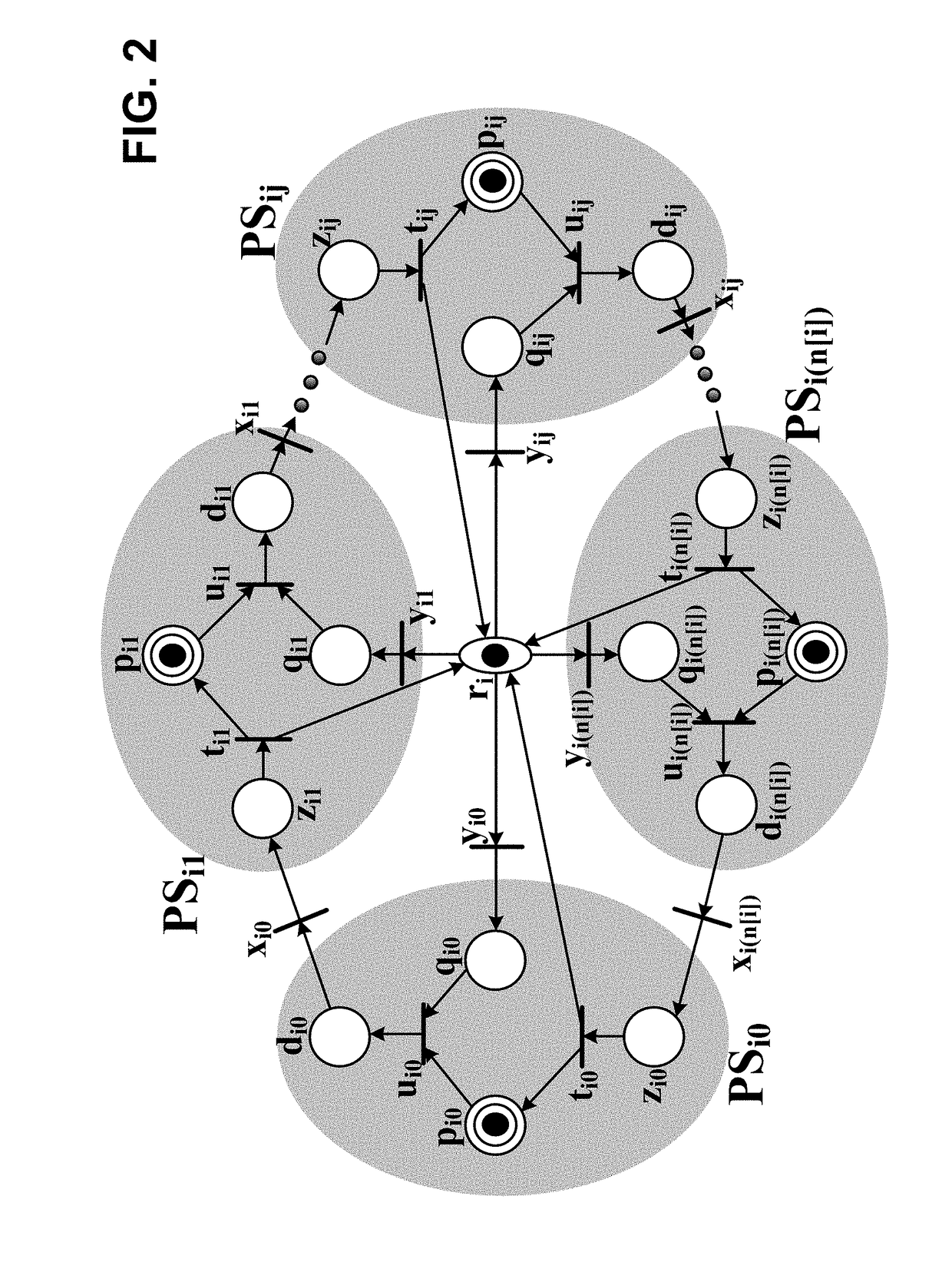Petri net-based optimal one-wafer cyclic scheduling of treelike hybrid multi-cluster tools
a hybrid multi-cluster tool and scheduling technology, applied in the direction of instrumentation, programme control, total factory control, etc., can solve the problems of difficult scheduling, complex multi-cluster tool, and difficult evaluation of performan
- Summary
- Abstract
- Description
- Claims
- Application Information
AI Technical Summary
Benefits of technology
Problems solved by technology
Method used
Image
Examples
example 1
[0210]It is a treelike hybrid 3-cluster tool, where C1 is a fork tool and its adjacent downstream tools are C2 and C3. Furthermore, C2 and C3 are single-arm tools, and C1 is a dual-arm tool. Their activity times are as follows. For C1, (α10, α11, α12, α13, λ1, μ1)=(0, 77, 0, 0, 23, 1); for C2, (α20, α21, α22, λ2, μ2)=(0, 75, 79, 4, 1); and for C3, (α30, α31, α32, λ3, μ3)=(0, 71, 69, 6, 1).
[0211]For C1, one has ξ10=23 s, ξ11=100 s, ξ12=23 s, ξ13=23 s, ψ11=(n[1]+1)×(λ1+μ1)=4×24=96 s, and Π1=100 s. For C2, one has ξ20=19 s, ξ21=94 s, ξ22=98 s, ψ21=2(n[2]+1)×(λ2+μ2)=6×5=30 s and Π2=98 s. For C3, one has ξ30=27 s, ξ31=98 s, ξ32=96 s, ψ31=2(n[3]+1)×(λ3+μ3)=6×7=42 s and Π3=98 s. Since all the individual tools are process-bound, this 3-cluster tool is process-dominant, and one lets Θ=π1=π2=π3=Π=Π1=100 s. By the algorithm provided in [Yang, et al., 2015], the robots' waiting time is set as ω20=6 s, ω21=2 s, and ω22=Π−ψ21−ω20−ω21=100−30−6−2=62 s; ω30=2 s, ω31=4 s, and ω32=Π−ψ31−ω30−ω31=100−42...
example 2
[0213]It is from [Yang, et al., 2015]. A treelike hybrid 5-cluster tool with C2 be a fork tool, and its adjacent downstream tools are C3 and C5. The tool C4 is the downstream tool of C3, and C2 is the downstream tool of C1. Furthermore, C1 is a dual-arm tool and the others are single-arm tools. Their activity time is as follows: for C1, one has (α10, α11, λ1, μ1)=(0, 61.5, 0, 28.5, 0.5); for C2, one has (α20, α21, α22, λ2, μ2)=(0, 0, 0, 10, 1); for C3, one has (α30, α31, α32, α33, λ3, μ3)=(0, 56, 0, 58, 7, 1); for C4, one has (α40, α41, α42, α43, λ4, μ4)=(0, 56, 66, 65, 5, 1); and for C5, one has (α50, α51, α52, λ5, μ5)=(0, 48, 50, 6, 1).
[0214]From [Yang, et al., 2015], the lower bound of cycle time of the system is Θ=Π=90 s. With Θ=Π=90 s, the robot waiting time is set as follows. For C4, ω40=11 s, ω41=1 s, ω42=2 s, and ω43=28 s are set. For C5, ω50=15 s, ω51=13 s, and ω52=20 s are set. For C3, ω31=8 s, ω30=3 s, ω32=1 s, and ω33=14 s are set. For C2, ω20=2 s, ω21=0, and ω22=22 s ar...
PUM
 Login to View More
Login to View More Abstract
Description
Claims
Application Information
 Login to View More
Login to View More - R&D
- Intellectual Property
- Life Sciences
- Materials
- Tech Scout
- Unparalleled Data Quality
- Higher Quality Content
- 60% Fewer Hallucinations
Browse by: Latest US Patents, China's latest patents, Technical Efficacy Thesaurus, Application Domain, Technology Topic, Popular Technical Reports.
© 2025 PatSnap. All rights reserved.Legal|Privacy policy|Modern Slavery Act Transparency Statement|Sitemap|About US| Contact US: help@patsnap.com



